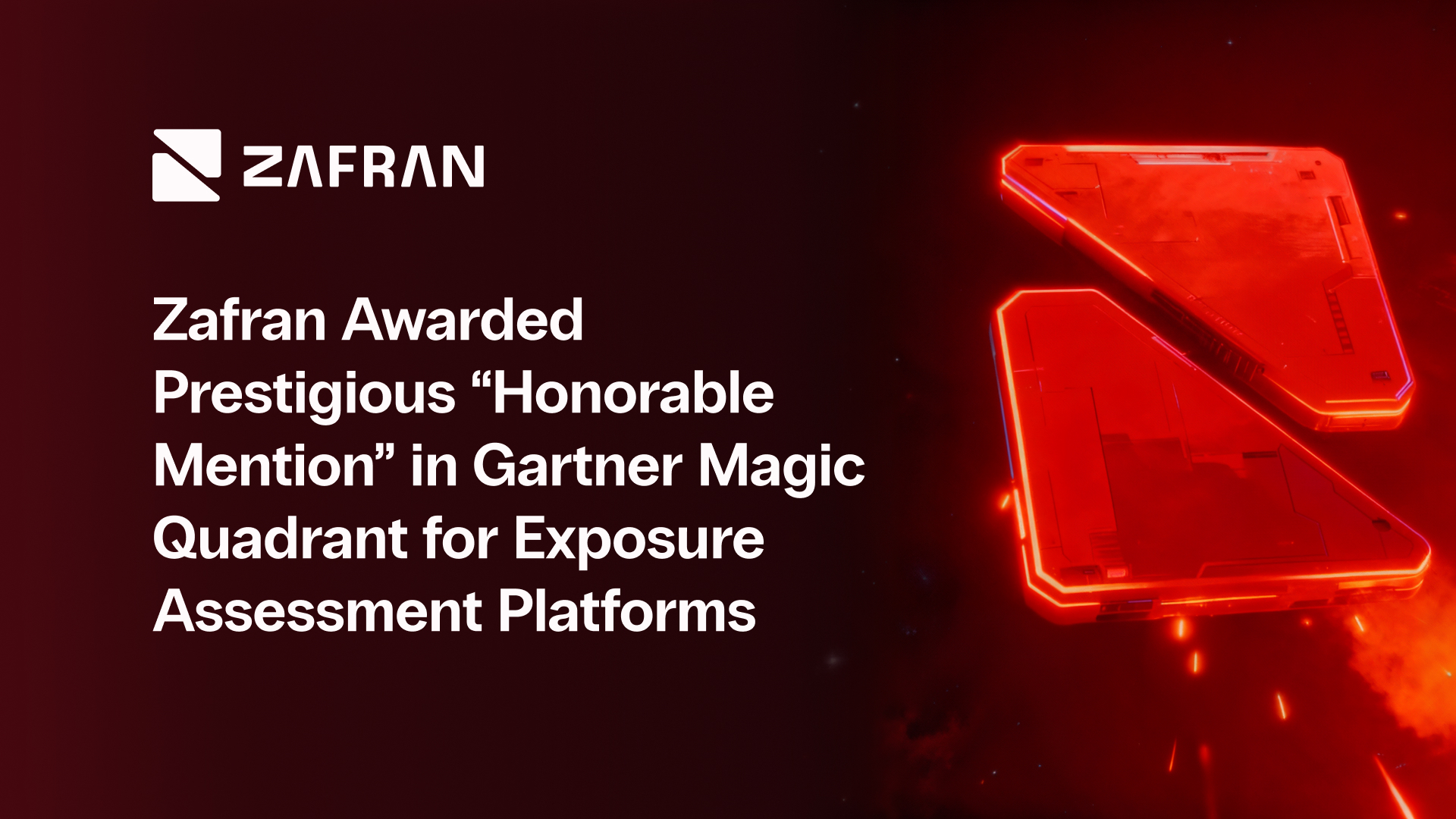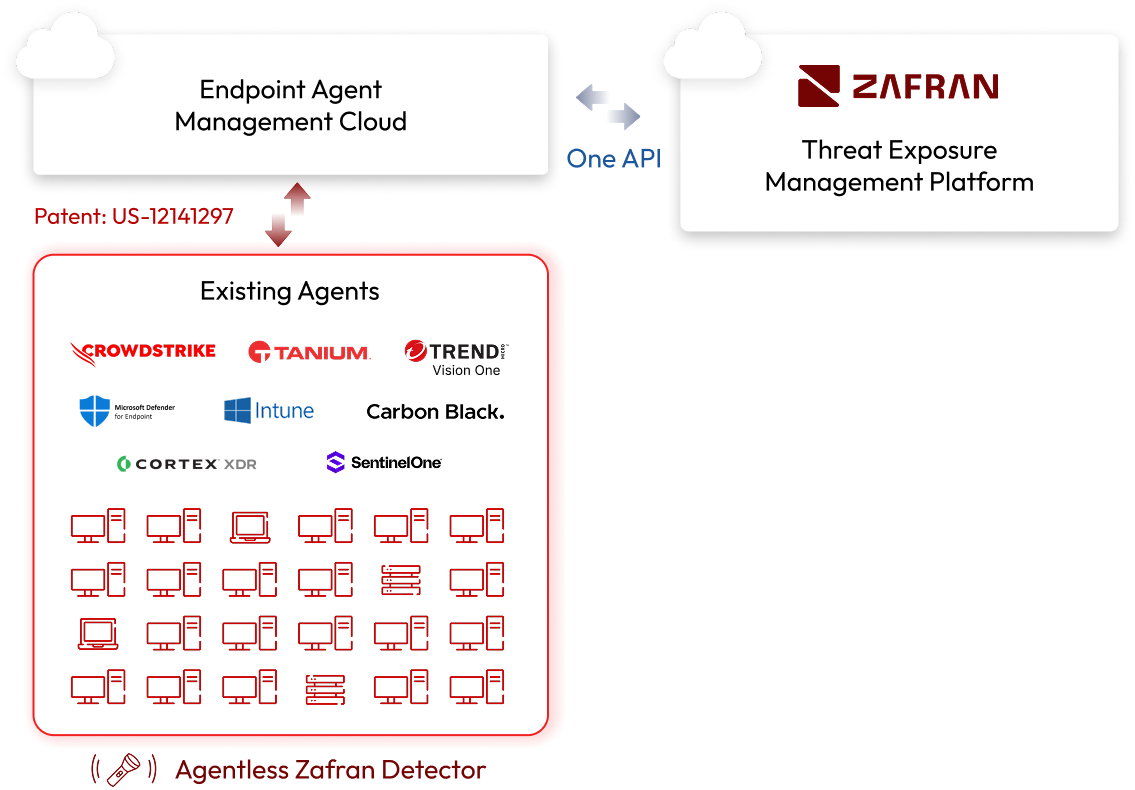Zafran Awarded Prestigious “Honorable Mention” in Gartner Magic Quadrant for Exposure Assessment Platforms

We’re thrilled to share that Zafran Security has been included with an Honorable Mention in Gartner’s inaugural Magic Quadrant for Exposure Assessment Platforms. We’re especially proud to be the youngest vendor named, achieving Magic Quadrant recognition in 3 years and the only vendor born in the AI era.
For a company founded to rethink vulnerability management from the ground up, this recognition is meaningful validation of our momentum and the market’s shift toward true exposure-first security. It reflects what our customers already know: the fastest path to reducing risk is to understand what’s actually exploitable in your environment, and then mobilize immediate action using the defenses you already own.
From day-one conviction to category momentum
We started Zafran with a clear mission: proactively stop the exploitation of vulnerabilities, everywhere. Legacy, scan-and-sort workflows were buckling under the volume of findings, the complexity of hybrid estates, and shrinking time-to-exploit windows. Teams didn’t need more criticals; they needed clarity on the few that truly matter and a faster way to act.
Our approach introduced a new operating model:
- A clean, unified view of findings across cloud, AppSec, and on-prem assets.
- Contextual exploitability analysis that factors runtime presence, internet exposure, active threat activity, and the actual configuration/effectiveness of your compensating controls (EDR, NGFW, WAF, CNAPP and more).
- Actionability by design: rapidly mitigate using existing controls, then streamline root-cause remediation with AI-optimized fix workflows.
That conviction has driven a year of rapid shipping and customer adoption, the foundation for today’s recognition.
As Gartner writes in the report:
“Zafran focuses on reducing risk by identifying and remediating the small subset of vulnerabilities that are exploitable within an organization’s specific environment, factoring in the configuration of existing tools and risk context, such as internet exposure, runtime presence, and active threats. Zafran further helps take action by deploying control-based mitigations and auto-assigning remediation tickets to the right owners.”
- Gartner, Magic Quadrant for Exposure Assessment Platforms, Mitchell Schneider, Dhivya Poole, Jonathan Nunez, November 10, 2025.
The Exposure Graph
At the core of the platform is the Exposure Graph. It maps every asset and component to discovered vulnerabilities, observable attack vectors, MITRE ATT&CK techniques, and the compensating control mitigations that can reduce risk of exploitation. The result is a living picture of how an attacker could actually move in your hybrid environment, which controls already reduce the blast radius, and where coverage or configuration gaps remain. Security teams get a single source of truth for prioritization, mitigation and remediation. Leaders get a clear way to measure progress as exposures fall and controls improve.
Two launches that completed the platform
1) Remediation Operations (RemOps): fixing the “last mile”
In April of this year we launched RemOps to close the remediation gap that plagues most programs. RemOps uses generative AI to consolidate duplicate findings into a single, high-fidelity “golden ticket”, auto-route it to the right owner via Jira/ServiceNow with Assignment Rules, and track Verified Closed status. The impact is immediate:
- Less noise: redundant patches and overlapping CVEs collapse into one action.
- More velocity: the right owners get clear, context-rich tickets automatically.
- Real closure: items aren’t marked done until they’re verified in runtime.

2) The Zafran Detector: native vulnerability discovery without new agents
We then introduced the Detector, bringing continuous, runtime-first vulnerability discovery to the same platform without adding agents or intrusive scans. Detector correlates findings to SBOM components and continuously flags newly disclosed CVEs, enriched with runtime, reachability, and threat intel. Combined with our exploitability analysis, customers gain a single source of truth from discovery to mitigation to remediation.

Together, Detector + RemOps deliver a full Threat Exposure Management platform that:
- Discovers what matters across cloud, on-prem, and appsec,
- Proves what’s exploitable in your environment,
- Mitigates risk right now using existing controls, and
- Remediates root cause with clarity and scale.

Why this recognition matters
We believe Gartner’s new Magic Quadrant formalizes what forward-leaning security teams have been practicing: exposure assessment isn’t about counting vulnerabilities, it’s about reducing the probability and impact of exploitation.
Being included, and as the youngest vendor mentioned, underscores three things about Zafran’s trajectory:
- Speed of innovation
In under a year we advanced from contextual prioritization to a complete exposure management platform that unifies discovery, exploitability, mitigation, and remediation. - Customer-proven outcomes
Organizations like Summit Utilities use Zafran to slash “false criticals” by over 90%, focus effort on the top 10% of truly exploitable issues, and measurably compress MTTR by eliminating ticket noise and manual triage. - A pragmatic path to risk reduction
By leveraging defenses already deployed (EDR, WAF, NGFW, CNAPP), Zafran removes patch cycles from the critical path, buying time safely while remediation completes.
What’s Next: Exposure Management in the Age of Agentic AI
We know the volume of vulnerabilities has surged. At the same time, AI powered exploits now move faster than patches, with attackers weaponizing vulnerabilities in minutes. We should not cede the cyber advantage derived from AI to attackers and criminals.
Zafran’s Exposure Graph gives us a unique foundation for agentic capabilities at scale. It continuously maps assets, software components, vulnerabilities, attack paths, and the real configuration of deployed controls. That living context is what agentic systems need to plan actions, make safe decisions, and verify results across hybrid environments without guesswork.
We are excited to share what’s next!
A note of thanks
To our customers, partners, and market analysts: thank you for your trust, candor, and relentless push for better. Your feedback meaningfully shaped the Zafran platform and continues to guide our innovation.
Traditional vulnerability management must change. So many are drowning in detections, and still lack insights. The time-to-exploit window sits at 5 days. Implementing a Continuous Threat Exposure Management (CTEM) program is the path forward. Moving from vulnerability management to CTEM doesn't have to be complicated. This guide outlines steps you can take to begin, continue, or refine your CTEM journey.

Request a demo today and secure your organization’s digital infrastructure.
Request a demo today and secure your organization’s digital infrastructure.
